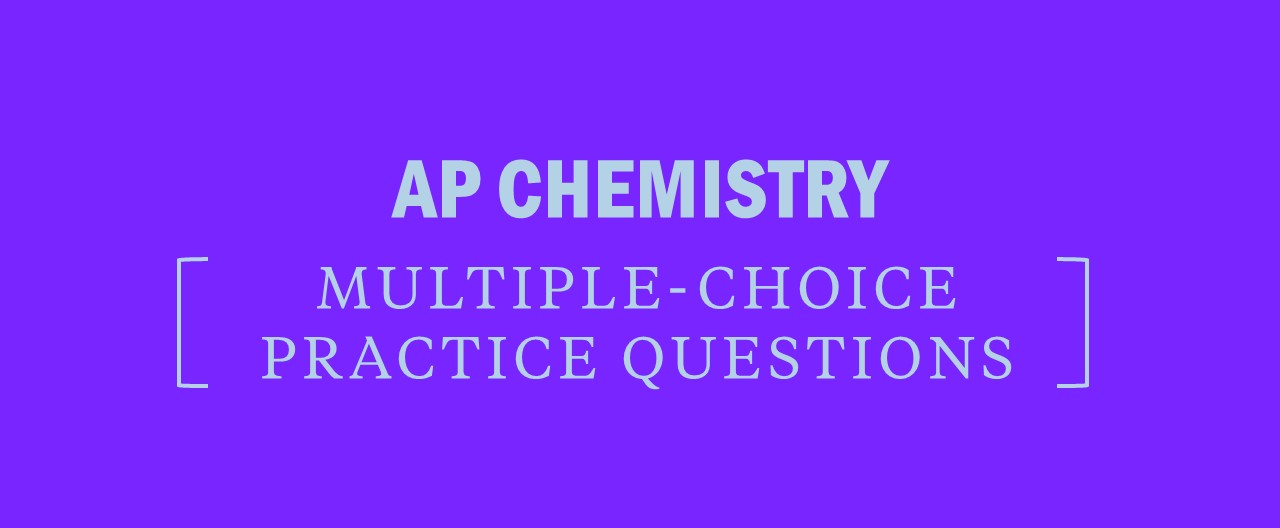AP Chemistry: Free Response Strategies
Section II of the AP Chemistry exam is 105 minutes long and consists of seven questions: three long and four short free-response questions. Here are some points to review:
Information Overload
We used the “vague party directions” to describe the information doled out before Section I. Section II goes for more of an “information overload” approach. There are full pages of information before Section II begins. There’s a periodic table, as well as numerous equations and constants covering the following:
- Atomic structure
- Equilibrium
- Thermochemistry
- Gases, liquids, and solutions
- Oxidation-reduction; electrochemistry
Almost 50 equations and a slightly smaller number of constants are displayed for you, not including all the information given on the two tables.
Faced with all this, you might think, “I can’t possibly remember to use all this stuff.” Don’t let the sheer amount of information overwhelm you and cause this reaction. Instead, understand that some of this information will be needed for several of the answers, but that the rest is there to act as a smoke screen. Consider things from the testmakers’ standpoint. They can’t place only the information needed in Section II; that would make things too simple, as everyone would know to use the facts provided. Therefore, they have to devise a system in which the chem-savvy people find the facts they need, while the less-fortunate students get lost in the swamp of additional information.
It’s not exactly as simple as that, but for our purposes this description works fine. Look over the tables at the beginning of Section II and tell yourself, “I will need to use some, but certainly not all, of this information on several of the questions in this section.” That will give you the right approach to handling the large amount of data that precedes Section II.
The topics covered in the free-response questions are usually fairly common chemistry topics. They aren’t trick questions asking about an obscure subject. However, a well-known topic doesn’t mean the problem will be simple. Most questions have many parts. You usually won’t get one broad question like “What is the real meaning and significance of chemistry?” Instead, you’ll get an initial setup followed by questions labeled (a), (b), (c), and so on. Expect to write at least one paragraph (or provide a multi-step equation) for each letter.
For each subquestion on a free-response question, points are given for saying the right thing. The more points you score, the better off you are on that question. Going into the details about how points are scored would make your head spin, but in general, the AP Chemistry people have a rubric that acts as a blueprint for what a good answer should look like. Every subsection of a question has one to five key ideas attached to it. If you write about one of those ideas, you earn yourself a point. There’s a limit to how many points you can earn on a single subquestion. There are also other strange regulations, but it boils down to this: Writing smart things about each question will earn you points toward that question.
So don’t be terse and don’t rush. You have about 7 minutes for each short free-response problem and 25 minutes for each long one. Use the time to be as precise as you can be for each subquestion. Sometimes doing well on one subquestion earns you enough points to cover up for another subquestion for which your answer isn’t as strong. When all the points are tallied for that free-response problem, you come out strong on total points, despite the fact that you didn’t ace every single subquestion.
Test Prep Tip
When you answer free-response questions in practice or homework, have a timer running for 7 minutes for the short questions and 25 minutes for the long ones. This is about the amount of time you have per question, and you’ll begin to feel more comfortable as you get used to working under time restrictions.
Finally, since you are given a calculator to use on Section II, expect to use it. There’s no point in dividing an exam into calculator/no calculator if they aren’t going to make you press some digits in Section II. You can also guess that Section II will require you to use some of the formulas at the beginning of the section in your calculations. This isn’t 100 percent certain, of course, because nothing on an as yet unseen test ever is. But it is a very good guess, kind of like picking the most favored horse to win a race.
If you get a question on a subject in which you’re weak, things might look grim for that problem. Still, take heart. Quite often, you’ll earn some points on every question since there will be some subquestions or segments with which you are familiar. Remember, the goal is not perfection. If you can ace five of the questions and get partial credit on the other two, you will put yourself in position to get a good score on the entire test. Don’t lose sight of the big picture just because you don’t know the answer to one subquestion on a long free-response question.
Be sure to use all the strategies discussed when taking practice exams. Trying out the strategies there will get you comfortable with them, and you should be able to put them to good use on the real exam.

